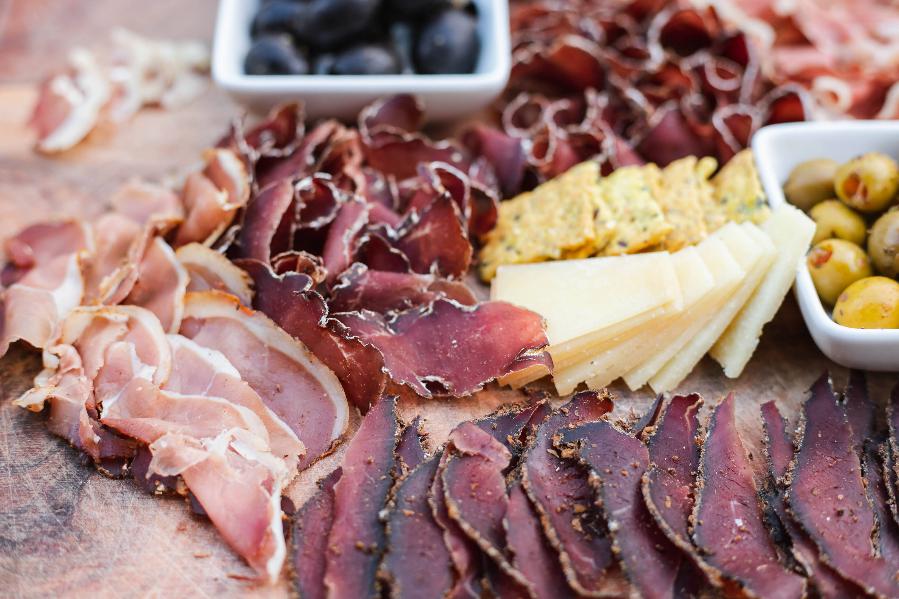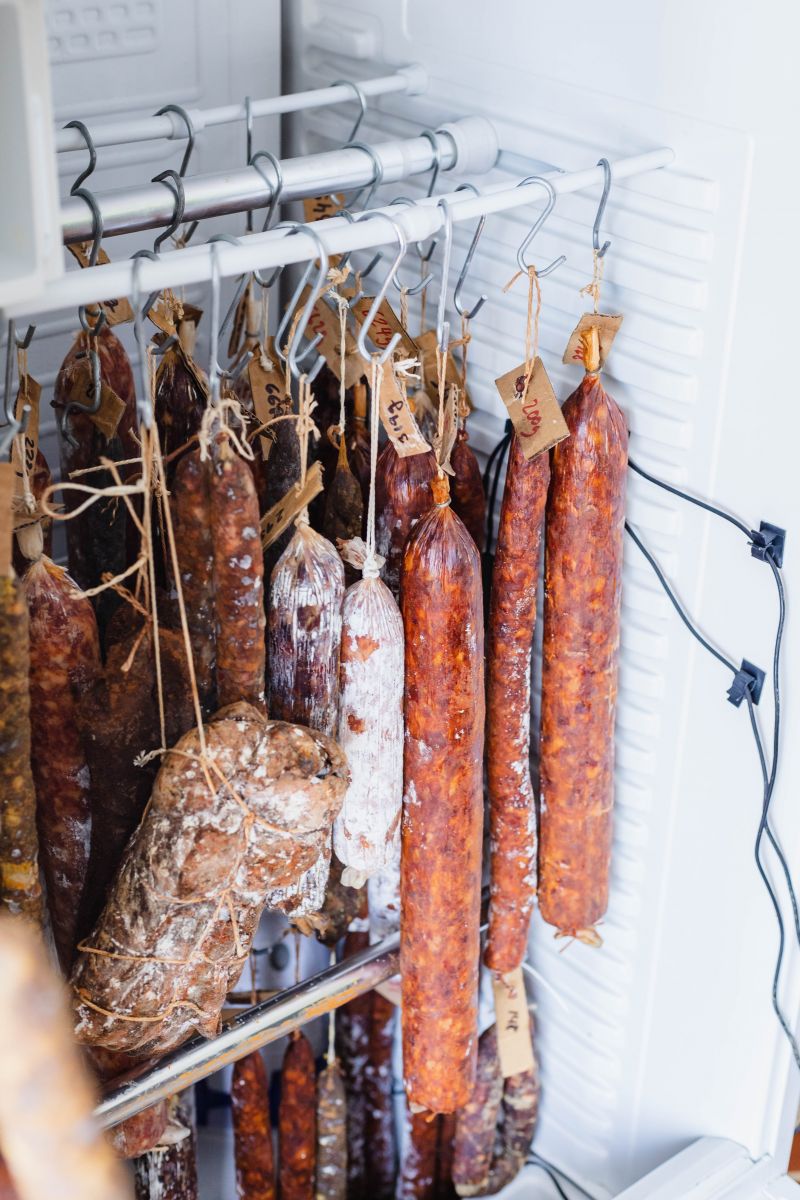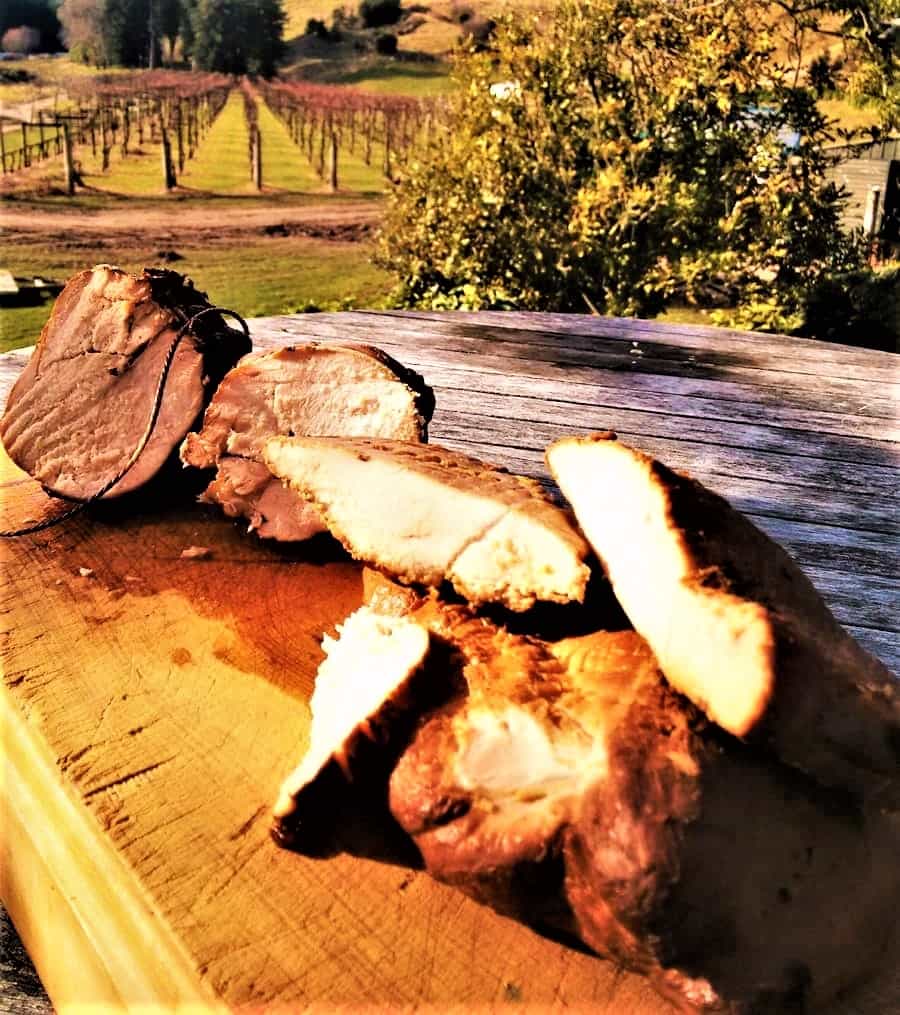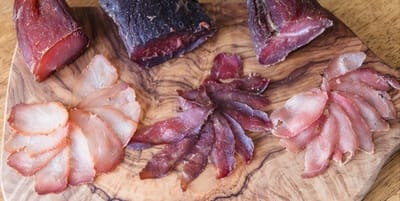Table of Contents
For decades, immersed in studying, working, learning, and teaching in the craft of meat curing, now sharing his passion with you through eat cured meat online resource.
The meaning of cured meat seems like a pretty simple question, but due to the variations and different types of cured meat, I want to discuss it in more detail.
For instance, some cured meats, like dry-cured meats, are ready-to-eat, like prosciutto or dry-cured picante salami.
Then, on the other hand, you have dry-cured cold smoked bacon, which is, of course, one of my cured meats that I make regularly. This is cured meat, but it is cold-smoked and dried. It’s cooked only before it’s eaten.
Let’s talk about all the variations of smoked ham which are cooked and smoked simultaneously. Yes, we are just scratching the surface. Xmas Ham, Ham Hock, Pressed Ham, Deli Ham, etc.
I’ve taken a lot of pleasure in creating a useful resource on meat curing. My blog is about the worldwide variations of curing meat. It’s a fascinating area that is often confusing.
Along these lines, I have a pretty good idea of categorizing different approaches. I’ll cover the main ingredients that give you different results you can achieve with meat curing.

First, a simple answer. Then, I will continue with the other information below.
Curing meat means using salt to inhibit or hold moisture on the meat. Curing meat can be done for preservation and flavor or only flavor and no preservation.
For cured meats like pastrami, the cure is a wet brine of spices, water, and salt with some acidity, like vinegar or other variations! Then, you smoke and cook it to a safe temperature to eat (this is often called hot smoking).
Pastrami is not preserved meat, the wet brine does give it a little bit more time to keep in the fridge, but it is not preserved like other forms of meat curing. Like dry-cured, where salt is applied first, then it is carefully dried until bacterial growth is minimized.
Salt also plays the role of holding the moisture in by using the process of water binding. This is why a wet brining solution keeps a Christmas turkey moist (it’s cured but for no preservative effect).
It all comes down to the level of salt solution in the brine and also how long it’s in the brine. The more modern technique of equilibrium brining means you work out a percentage of salt to the weight plus the amount of water.
If you want to be more precision in brining, check out a meat curing and brining guide on this site.
On the other end of the spectrum of cured meat is dry-cured Prosciutto Parma ham. This type of cured meat has 2000 years of history (history about cured meats and charcuterie) since the Roman Times.
The Roman Preparation Of Salt Pork
Lucius Junius Moderatus Columella – wrote about ancient Roman empire agriculture around 50 AD
Doing some research I’ve found that this style of using it for a whole pig leg may have been done in China a long time ago, too – with salt of course. The Roman empire was prior to this, so I am unsure about the ‘truth’.
When Marco Polo arrived in China in the 13th century, he was there to pilfer. Impressed with the culture and customs he saw on his travels, he returned to Venice with Chinese porcelain, paper money, spices and silks to introduce to his home country. It was from his time in Jinhua, a city in eastern Zhejiang province, he found ham.
https://www.sbs.com.au/food/article/2018/11/03/over-1000-years-ham-heres-where-it-all-began
Parma Ham is a strictly protected quality dry cured pork leg from around Parma, Italy. It is rubbed with salt, in other words, it is dry cured.
Parma Prosciutto Ham goes through controlled environments for 3 months, where humidity and temperature are changed to minimize bacterial growth and maximize the salt penetration into the meat.
This is followed by 9 months of hanging and drying at a reasonably ambient temperature.
I visited one of these Parma Ham factories which makes 85,000 Parma hams a year – this is considered a medium-sized operator in the region (Slega Parma Ham).
I’ve given you a few examples of cured meat, but of course, this is just the tip of the cured meat iceberg. There are other variations of ingredients and how it’s made. I’ll get into that.
How Does Meat Cure?
Primarily, meat is cured using salt. The salt plays two roles:
- Water Binding
- Diffusion
Water Binding
Water binding means the salt in the water is binding to the meat muscle cells. In other words, it has inhibited the meat.
Unwanted Bacteria does not like salty, acidic, smoky or colder (link to preserving meat I wrote) environments.
So this salt inhibition is used to deter unwanted bacteria or slow growth.
Depending on the quantity, salt is also used to hold in moisture. When meat is cooked and smoked at the same time, such as smoked ham, it will have moisture, be safe to eat, and be juicy (hopefully!).
I cook and smoke at lower temperatures to minimize the drying out of that meat. But sometimes, say, for young wild turkeys or wild ducks, it’s better to have higher temperatures and remove before the meat loses the moisture (an art in itself).
Salt is definitely the primary ingredient in cured meat. However, there are other ingredients, so let’s touch on these as well.
Curing and Ingredients that Vary Outcomes
- Salt
- Spices
- Vinegar
- Mold Culture
- Nitrates/Nitrites (Pink Curing Salt)
- Cold Smoking
- Hot Smoking / Cooking
Salt
This is the main curing ingredient – salt is used in a dry or wet cure as mentioned.
There are also different ways for dry curing, they are all aimed toward the same outcome:
- Air Curing
- Salt Curing
- Salt Box Curing
- Saturation Curing
- Equilibrium Curing
For using a cure that has salt & water, other names are:
- Wet Brining
- Pickling
- Wet Curing
Spices
I’ve discovered over the years that there are properties associated with different spices.
Coarsely ground peppercorns have been used traditionally to cover dry-cured meats for thousands of years.
Pepper has antibacterial and antifungal properties. So, as you can imagine, it protects the surface and the inside of the meat to some extent.
Hard and soft green herbs have different properties.
As well as other traditional herbs like fennel and cumin.
Different studies have concluded that the use of thyme increases stability and reduces lipid oxidation during the shelf-life period of foods (meat, meat products, milk, fish or fish products), which makes thyme a promising source of natural additives
https://www.ncbi.nlm.nih.gov/pmc/articles/PMC7464319/#:~:text=Different%20studies%20have%20concluded%20that,promising%20source%20of%20natural%20additives.
Garlic crushed could reduce the level percentage of beef fat and slowdown the increasing TBA values during storage at refrigerator temperature.
Garlic Antioxidant (Allium Sativum L.) to Prevent Meat Rancidity
Vinegar
Vinegar is traditionally used in a South African cured meat called biltong. Vinegar has a similar effect to cooking, which technically is called denaturing. The changes around the protein cells are similar. Sorry, that’s about as technical as I can get.
Salt, vinegar, and crushed coriander are the classic ingredients for making South African biltong – a unique, delicious type of cured meat (jerky but sometimes less drying and sugar added).
I have made biltong many times with traditional and varied recipes. Biltong can loosely be called cured meat.
For ‘ceviche, ‘ the seafood is soaked in lemon or lime juice to denature or “cook” without using heat. Sounds a bit crazy, doesn’t it? It’s the same as biltong, but for immediate consumption!
I have caught fish suitable for ceviche many times. Ceviche is cooked with acidity and not heat!
Mold Cultures
It is common practice to use a mold starter culture to inoculate the meat for traditional salami and for the home charcuterie maker. This method is also used commercially in Western cultures.
Meat curers making traditional salami hundreds of years ago used the natural bio flora around the area.

Nowadays, we use a laboratory-grown mold culture, which I keep in the freezer. When I need it, I inoculate, spray, or submerge the cured meat or dry cured salami, ready to be hung in my DIY fridge.
As you have stuffed this meat mixture into salami casing, you have to increase the temperature and humidity depending on the recipe so the start of culture can flourish inside the meat.

The first starter culture (like Mold 600) is often used for create surface beneficial cultures, see that powdery white stuff on salami.
(This is the one that can sometimes bloom naturally…)
This is one of the many variations for creating an acidic environment inside the meat to protect it from bacteria, often a slight tangy flavor can come from this.
The main reason why this is done for curing salami meat is to change the pH level and make the environment more acidic.
The unwanted bacteria that spoil meat do not like an acidic environment, so starter cultures give you this protection (if done right, dry-cured salami falls into advanced meat curing).
I have not tested this, but red wine may also have an impact, and I could not find any evidence of it. I need to invest in the expensive pH meter!
Nitrates/Nitrites (Pink Curing Salt)
There is an ongoing debate about whether the pink curing salt is actually the curing part of it. It makes sense, I suppose when you read it in the curing descriptions. Pink-curing salt has many other names. It is generally 90% or more salt.
But you should always use a minimal amount (0.25% of the TOTAL meat weight)
It is used to make sure there is no chance of botulism.
I have studied botulism cases, and the actual number of cases is often more related to the traditional indigenous gathering of food like seal meat. Canning seems to produce a handful of cases, but often, there may be less than a few dozen cases per year in the United States.
Pink curing salt gives your deli ham that wonderful glow of pink and also gives your bacon that pinkness. Quite often if you’re using sea salt the color would be more greyish.
It’s a lot harder for a corporation to market grey food. What’s your favorite grey food?
Think about it – a well-done steak has a grey look to it. That is precisely what deli ham and bacon could, should, or would look like without the nitrites.
There are natural forms of nitrates and nitrites in the salt used for prosciutto; you can see them because of the color after the drying is done (usually 12 months or more).
There are only 2 ingredients in Parma Prosciutto Ham under the PGI and DOP regulations (European Food Protection Laws). These are strictly protected products; they are pork and salt.
Cold Smoking
Many people think that cured meats are always smoked (here is an article on whether smoke can cure I wrote). Yes, some are, but often, they are not.
Dry-cured cold smoked bacon, for instance, the cold smoke has antibacterial and antifungal properties.
My research into cured and smoked meats shows that they were used thousands of years ago, originally for survival and sustenance motives.
In certain European areas, cold smoking was heavily applied to preserve food and keep bugs away. Cold smoking leaves a certain amount of smoke around the meat after it has been properly cured, drying it out at the same time. Less moisture means fewer unwanted bacteria that could spoil the meat.
For longer-term cold smoking, high humidity is needed so the meat doesn’t dry out as much.
I’ve done 40 hours of cold-smoking venison, and, at a certain point, it could not take on any more smoke flavor. Cold smoking can also be applied to vegetables, spices, salt, eggs, cheese, and anything you want to try.
Hot Smoking / Cooking
Curing and hot smoking I often do with fish and wild turkey, for instance.
Instead of using the total amount of salt I use about half for my meat curing, mainly to hold the moisture inside the meat when I move on to hot smoking /cooking it.

This is a form of cured meat (here are some common curing mistakes) but is not preserved, it’s mainly for seasoning and making that finished outcome more enjoyable.
Here are the different ways we can use for cured meat and some examples of types of cured meat.
Pastrami is wet-brined and hot-smoked too.
Methods of Curing Meat
- Dry Cured or Air Cured Meat (With or Without Cold Smoking)
- Cured With a Wet Brine, then Dry Cured
- Cured With a Wet Brine and Cooked/Hot Smoked
| Dry Cured | Wet Brined / Cold Smoked | Wet Brine / Hot Smoked |
| Pancetta | Kippers | Patrami |
| Prosciutto | Smoked Herrings | Smoked Ham |
| Braesola | Cold Smoked Salmon | Deli Ham |
| Dry Cured Salami |

